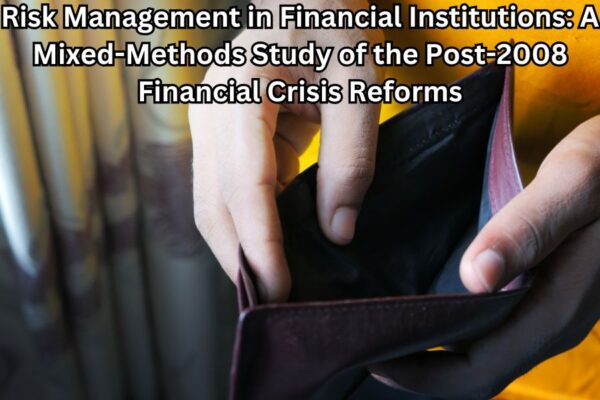Description
Risk Management in Financial Institutions: A Mixed-Methods Study of the Post-2008 Financial Crisis Reforms
Abstract
The financial crisis encouraged by the financial institutions in 2008 exposed weaknesses and vulnerabilities in working with risk management procedures. Major turbulence experienced by financial institutions prompted an assessment of the current situation and future operations. Moreover, there is a need for integration to eliminate any financial risk for organizations. Besides, concerned regulatory bodies created new reforms to optimize stability and eradicate future crises. Risk assessment through continuous tests, liquidity, and improving governance solutions are essential to eliminate any future risks. However, measuring aims for a robust financial system helps eradicate risk with resilient metrics. This paper utilizes mixed research methods to understand changes in financial policies and reformations that help institutions manage risks.
Furthermore, this paper examines processes utilized by financial institutions to adopt new reformations. It also includes principles and changed methods to work with post-crisis scenarios. Mixed methods help to integrate qualitative and quantitative analytics methods. Such research offers insights and formulates expert risk management techniques. This research is a significant method to explore new reformations and strategic financial regulations to reduce the impact of financial risk. In addition, the study estimates the capacity and performance of measures to restore market resilience and eradicate systematic financial failures. Hence, gaining insights into modifications assists in predicting future patterns of financial management. Whereas profitability enhancement for the organization complying with sustainable financial growth helps to balance the entire sector and its operations.
Furthermore, the findings obtained offer invaluable insights into estimating the evolution of risk and sustainable management methods within financial institutions. This also helps to create policies with reformed regulatory principles and ascertain financial stability. Additionally, future recommendations are researched to ensure that challenges are addressed with compliant practices and approaches. Finally, increasing risk management strategies ensure that financial markets are secured from economic crises.
Read more about the topic
Global Financial Crisis and Risk Management
Risk Management in Banking Sector
View Other Projects on Risk Management
The Impact of Financial Risk Management Practices on Corporate Performance: A Mixed-Methods Study








Reviews
There are no reviews yet.